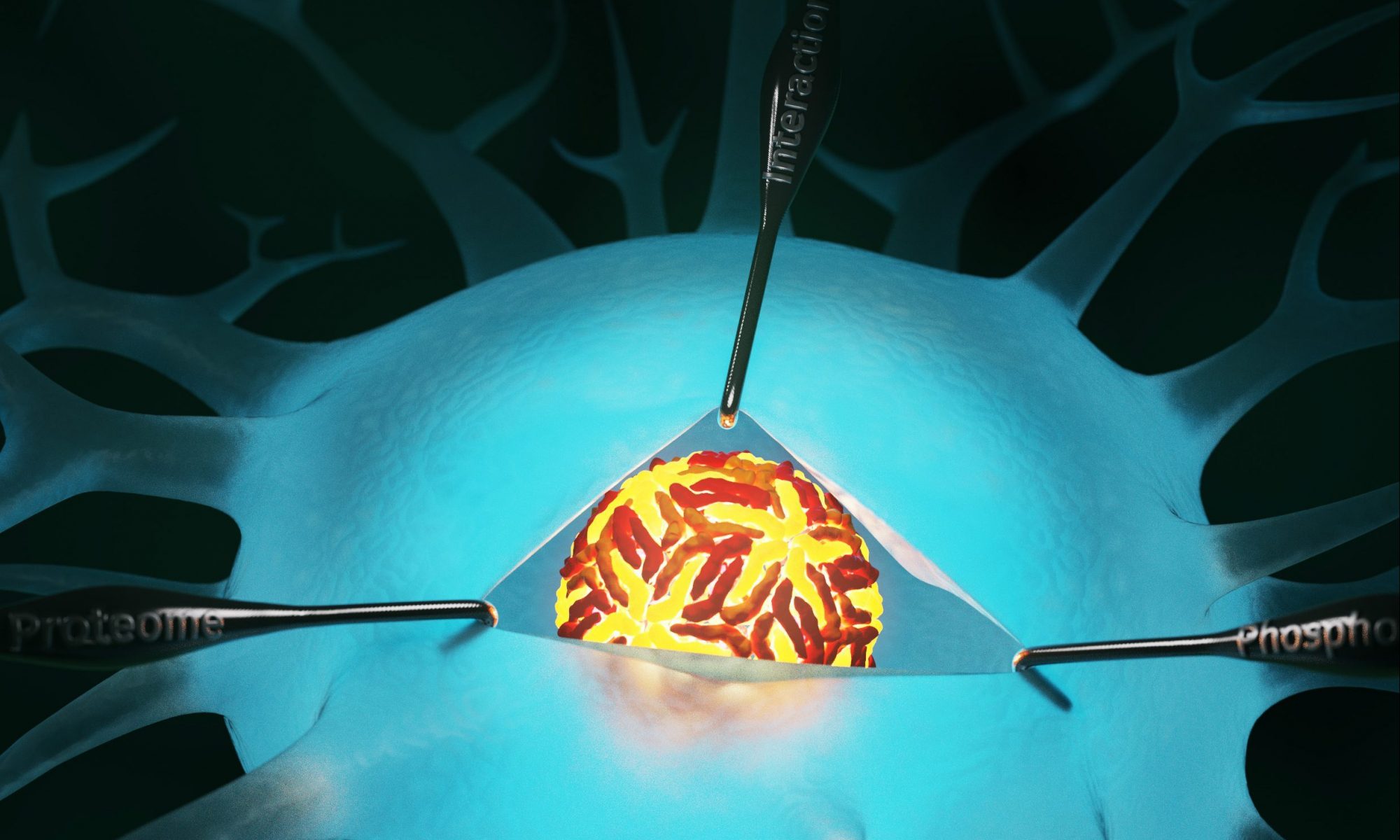New Review published on Zika host interactions
The review, titled “Chasing Intracellular Zika Virus Using Proteomics” can be found here.
Have a read here.
The review, titled “Chasing Intracellular Zika Virus Using Proteomics” can be found here.
The paper “A novel interaction between dengue virus nonstructural protein 1 and the NS4A-2K-4B precursor is required for viral RNA replication but not for formation of the membranous replication organelle” can be found here.
Congratulations to Philipp Hubel and co-authors – our work on the innate immune network got published in Nature Immunology!
The body’s defense strategies against viral infections are as diverse as the attacks themselves. We conducted a survey to systematically investigate the interactions of interferon-stimulated genes (ISGs), which are at the center of coordinating the antiviral immune response. Through integrating data obtained by affinity purification followed by mass spectrometry (AP/MS), published datasets and functional validation experiments, we found many unknown interactions of ISGs, which sheds light on the overall organization of the innate immune system.
Have a look at the paper: “A protein-interaction network of interferon-stimulated genes extends the innate immune system landscape”

Our collaborators Jenny Würth and Friedemann Weber identified a yet undescribed mechanism how Non-structural protein small (NSs) of Sandfly fever Sicilian phlebovirus perturbes type-I interferon induction: NSs directly associates to the DNA binding domain of the transcription factor IRF3 and thereby prevents induction of type-I interferon genes. Now published in Journal of Virology – Congratulations to Jenny!

Zika virus is a tropical virus transmitted to humans through the bite of infected mosquitoes. In most cases the infected individuals do not show any sign of the disease, however the virus can persist in the genital tract of infected males for several months and be sexually transmitted to the other individuals. When the virus infects pregnant women, it is directly transmitted to the fetus which develops severe neurological malformations.
Our study identified hundreds of cellular proteins (here depicted as lego bricks) whose functions are disturbed in Zika-infected cells, laying the foundation for understanding and eliminating this global threat.

As a follow up to our recent oxeiptosis paper, Pietro’s and Andreas’ commentary on oxeiptosis is published in “Cell Death and Differentiation”
Cell Death and Differentiation (2018) 25(7):1191-1193

PLoS Pathogens (2018) 14(4):e1006980

Big Congrats to Cathleen – she discovered Oxeiptosis – a novel type of cell death – now published in Nature Immunology! Oxeiptosis is an apoptosis-like cell death that responds to reactive oxygen species (ROS). ROS activates the sensor protein KEAP1 and induces a caspase-independent cell death program that involves the phosphatase PGAM5 and its target protein AIFM1. Oxeiptosis is important to limit inflammation caused by influenza A virus infection and therefore functionally resembles an apoptosis-like cell death pathway that functions in the absence of caspases. Great work! Congratulations!
Nature Immunology (2018) 19(2):130-140
Prof. Dr. Andreas Pichlmair
Immunopathology of Virus Infections Laboratory, Institute of Virology, Technical University of Munich
Einsteinstr. 25, D-81675 Munich, Germany
tel: +49 (0) 89 4140 9270, email: andreas.pichlmair@tum.de
https://www.mri.tum.de/datenschutz
Der Datenschutzbeauftragte des Klinikums ist unter Klinikum rechts der Isar, Stabsstelle Datenschutz, 81664 München oder unter 089/4140-0 oder datenschutz@mri.tum.de zu erreichen.
Der Datenschutzbeauftragte der TU München ist unter beauftragter@datenschutz.tum.de zu erreichen.




